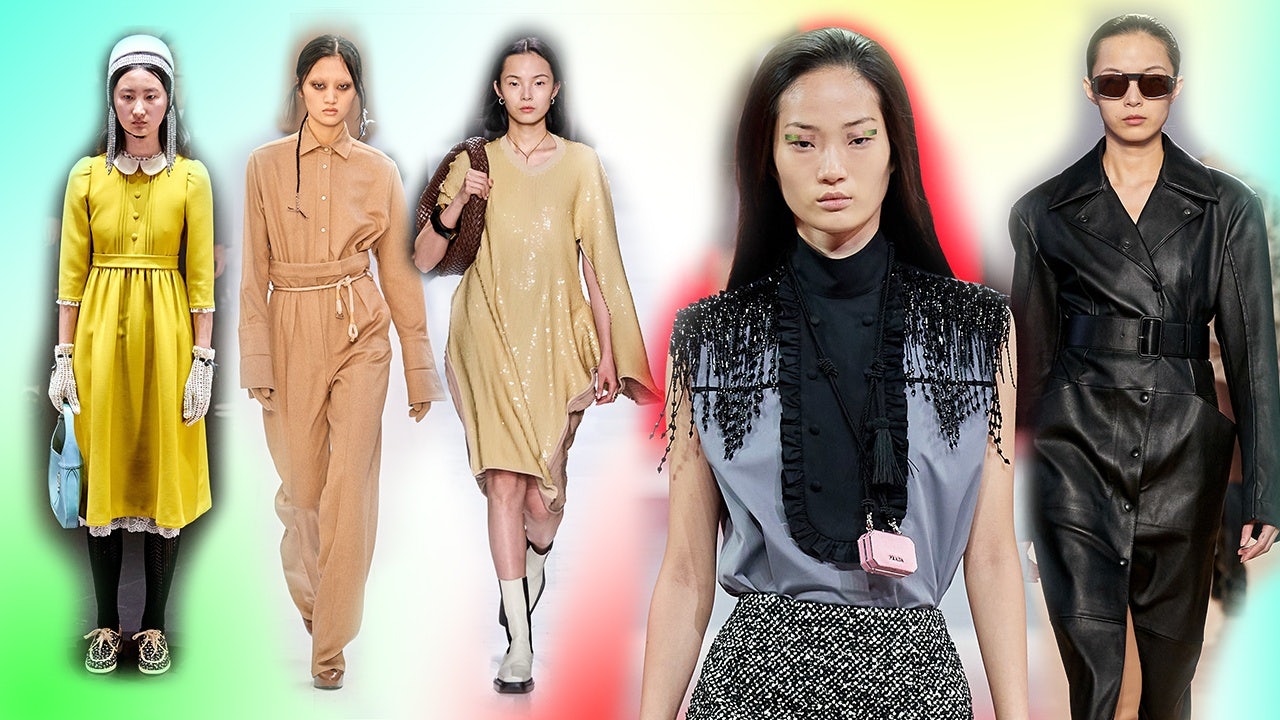The
Jing Daily Fashion Week Score#
evaluates how a brand’s collection resonates with the Chinese audience through a range of parameters. Our lens is now on Milan Fashion Week.
Last Wednesday, Milan Fashion Week opened on a high note, featuring the solidarity event "China, We Are With You." Targeting the majority of China who are still on lockdown, the event’s organizer, Camera Della Moda (National Chamber of Italian Fashion), collaborated with Tencent to livestream all of its runway shows. More than 30 brands garnered 16 million views on Tencent Video, and the Weibo hashtag featuring the slogan had a whopping eight million reads by the end of the last day.
For Milan Fashion Week Fall 2020, Jing Daily looks at brands who have a stake in the Chinese market and who stand to gain from heightened efforts. Brands like Prada and Giorgio Armani impressed Chinese netizens with a sustainability initiative and solidarity with China’s fight against Covid-19, respectively. Without the attendance of Chinese celebrities and KOLs due to travel restrictions, Gucci leveraged the power of K-pop stars, which made a splash for the brand on Weibo. Dolce & Gabbana, meanwhile, has a long road to recover from its blunders from November 2018.
The
Jing Daily Fashion Week Score#
is based on the following parameters:
- Model representation: evaluates representation of Chinese models on the runway.
- Digital impact: evaluates Chinese netizen reception and engagement on leading social media platforms including Weibo, WeChat, and Little Red Book.
- KOL & celebrity visibility: considers star power associated with the brand through strategic KOL and celebrity partnerships.
- Special brand efforts: considers special programs or efforts on a brand’s part to speak to the Chinese audience. Companies’ or brands’ contribution towards the on-going virus crisis are also considered.
- Design context: a qualitative assessment of how the brand’s collection will speak to the Chinese audience based on current trends and preferences.
- Brand history: considers existing brand history in China, including overall presence, social reach, number of stores, earning trends and brand missteps.
PRADA#
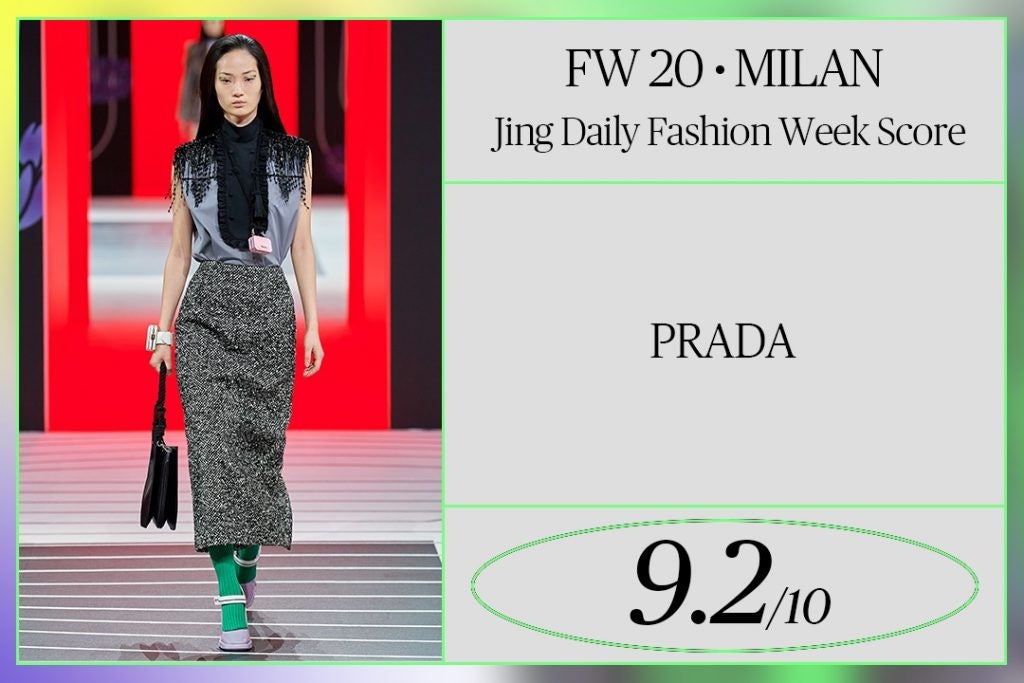
Prada took the leading position of our Milan Fashion Week score this season despite the large absence of Chinese celebrities and influencers. Having integrated digital strategies to their daily communications with the Chinese audiences, the Italian luxury house dealt with the challenges from the Covid-19 virus without a hitch. Along with livestreaming the show on its website, Prada used its runway WeChat Mini Program for the third time, featuring the show’s looks, runway details and behind the scenes shots of celebrities. Though Cai Xukun, the brand’s Chinese spokesperson and ultimate engine of rejuvenating its image and engaging younger customers couldn’t make the show due to travel restrictions, it still drove extensive online traffic thanks to the presence of the Korean singer Lisa from the girl group Blackpink, who has an incredible following in China, having gathered over 1.6 million Weibo follower in two months. The K-pop star seemed to take over Cai’s role – her golden suit look has been extensively reposted on Weibo and Little Red Book. Besides the dazzle of the star power, the fusing of technology and sustainability in the latest Linea Rossa collection well-received by Chinese netizens, adding more credit to the brand’s long-term dedication to fashion sustainability. Meanwhile, the addition of Raf Simons joining Prada with Miuccia Prada, as disclosed last Sunday, sparked off positive reactions among Chinese netizens. And the soft opening of Prada’s Tmall flagship store on Monday is promising as an offset to the disruption of offline retail.
BOTTEGA VENETA#
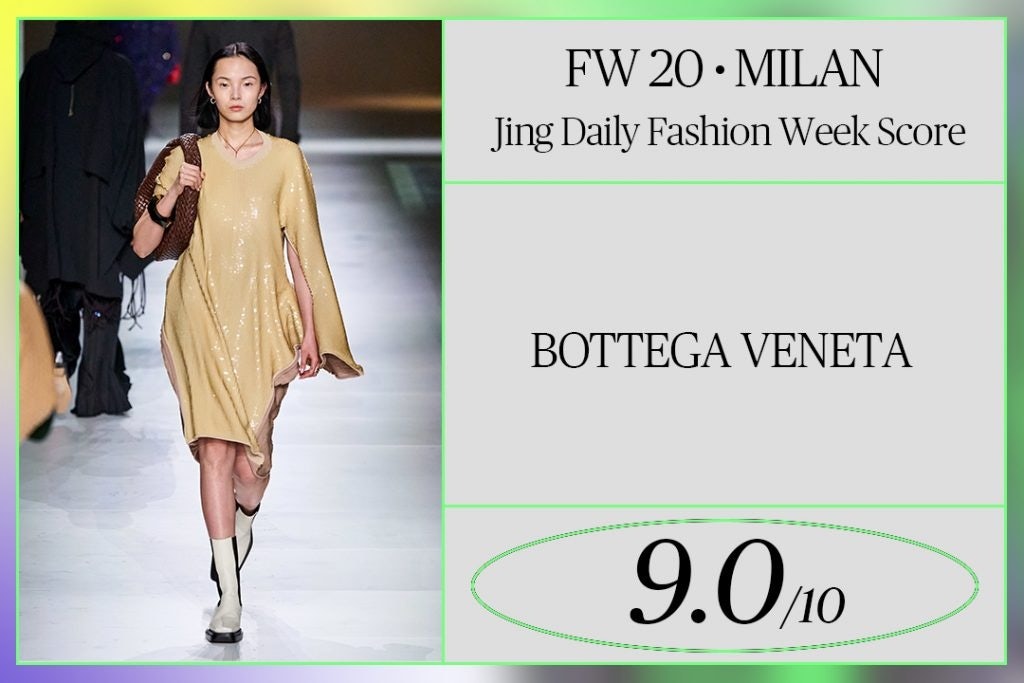
Kering’s reviving star Bottega Veneta, led by Creative Director Daniel Lee, has gained worldwide fashionistas’ interest over the past few seasons. Similar to the influencer frenzy around Bottega’s iconic pouches and sandals on Instagram, Chinese fashion KOLs are catching up with “the new Bottega'' hype. Correspondingly, the label increased their digital marketing efforts for this season’s runway show, launching an eye-catching Weibo ad that seamlessly guides the user from the ad to the brand’s website. Plus, the addition of the Korean actress Song Hye-Kyo’s, who is well known in China, helped dilute the absence of Chinese celebrities. Her all-black outfit paired with the newest Bottega chain pouch was praised by Chinese netizens, commenting that Song represents the brand’s identity perfectly. Having proved its talent for social marketing and keeping consistency in visual narratives, Bottega Veneta is expected to earn stronger brand loyalty among its valued Chinese consumers.
GUCCI#
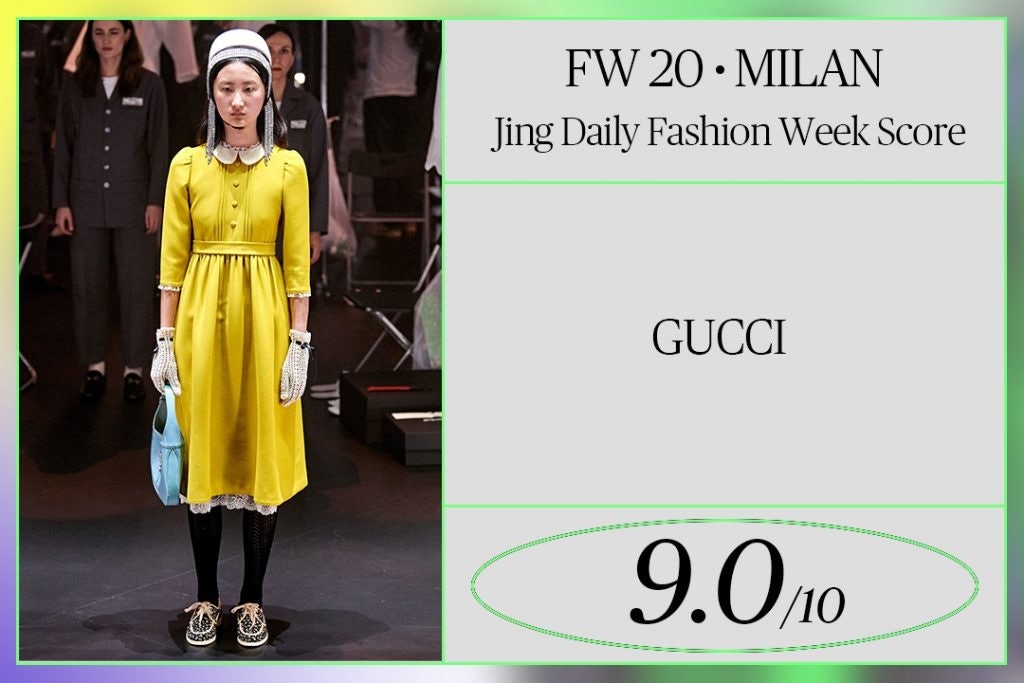
On this year’s catwalk, Gucci’s creative director, Alessandro Michele, impressed audiences with his bizarre aesthetic once again. Through a vintage-doll inspired “rituals” presentation, Michele combined intense lace, ruffles, and velvet into poplin blouses and pleated skirts, evoking a wild childlike aesthetic. As an experienced luxury player in the digital world, Gucci leveraged comprehensive social media strategies to improve its online presence. Its elaborate runway show could be seen via the brand’s WeChat Mini Program, delivering the first-hand looks and details to remote Chinese audiences. Elsewhere, the show livestreamed on Weibo and received over eight million views and 64,300 engagements. Similar to Prada and Bottega Veneta, Gucci also eyed the huge influence of Korean talents in China, highlighting K-pop star, IU, who commented on the show via Weibo and WeChat posts. Besides the positive reactions from IU’s fans, some voices indicated that they looked forward to seeing more innovations beyond Michele’s vintage representations. Young Chinese, after all, are all expecting newness from the brand.
MONCLER#
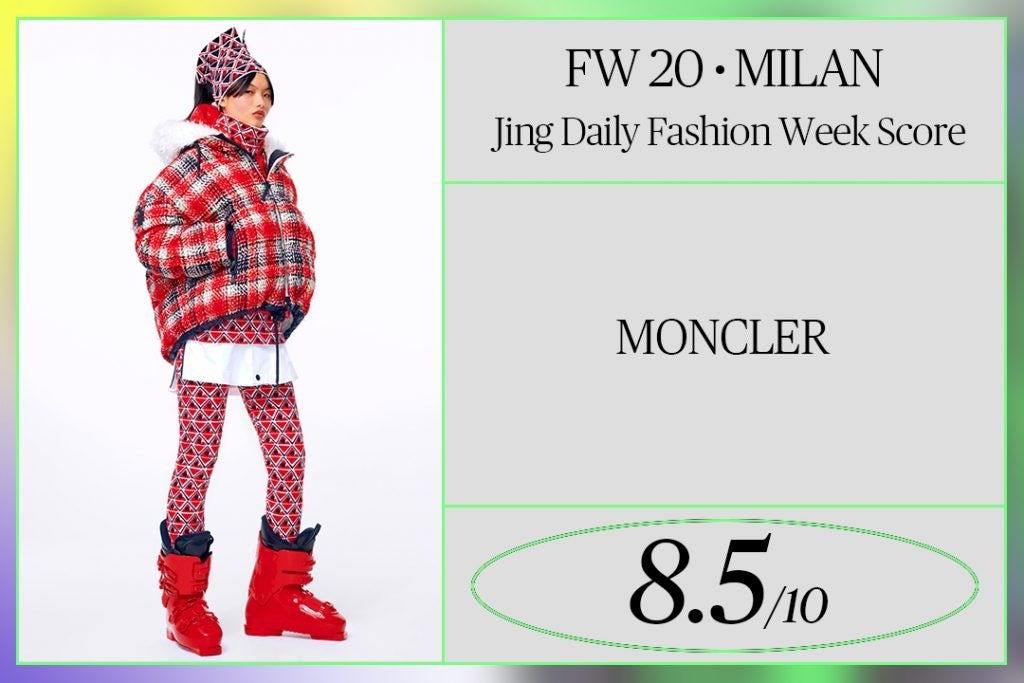
This season’s Moncler Genius show added to the brand’s creative experimentation, recruiting JW Anderson as a new Moncler Genius designer, as well as teaming up with Rimowa and Rick Owens. The eight Moncler Genius collections on display continued disrupting audiences’ imaginations on what the puffy jacket can be, exploring the intersection between functionality and high fashion. The show was indeed well-received by Chinese netizens, earning over 43,200 views on WeChat and engaging 500,000 discussions under the hashtag #MonclerGenius. WeChat user Lydie Li commented below the official runway post, “the show feels like an immersive contemporary art exhibition at Centre Pompidou.” The positive reception on China’s social media, however, did not happen overnight. The brand had started warming up for the big day on Weibo since Feb 2. On WeChat, the house runs a Mini Program “Moncler House of Genius,” which tracks all important moments of the series and drop updates. Last December, the brand opened a brick-and-mortar store in Beijing’s SKP-S mall, featuring limited edition Moncler Genius looks in hopes to engage younger customers with a refreshing shopping experience. Though the virus outbreak brings unexpected challenges to both Moncler’s offline and online operations, the house can continue to connect with its Chinese customers as long as it stays flexible and is prepared for the long-term.
GIORGIO ARMANI#
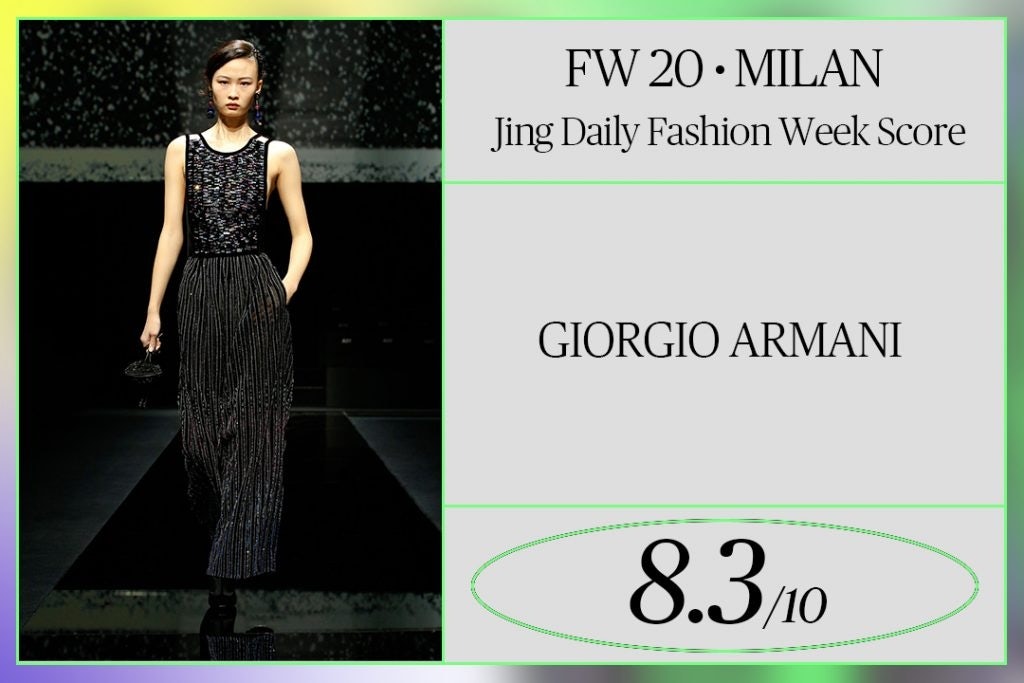
The famed Italian designer raised attention at this season’s MFW despite the show being presented behind closed doors as the Covid-19 virus spread through northern Italy. The highlight moment of the virtual show — with warm regards to China and the Chinese citizens — was 12 looks inspired by the Chinese culture from the Giorgio Armani Privé spring 2009 and 2019 collections and casting 12 Chinese models to present the looks. Mr. Armani said, of China, that he “has always maintained a special bond, both aesthetic and cultural.” His considerate message received large coverage from both the fashion media and KOLs. And such posts reinforced the emotional connection between the designer and the Chinese consumers. Though a few fashion KOLs critiqued the lack of newness in the fall collection, the overall discussion on the brand was positive, with so much attention on China and what it’s going through right now.
FENDI#

Chinese online viewers were impressed by the brand’s theme of women’s soft power, but mainly they had their eyes locked on Fendi’s new handbags. “Peekaboo gives me surprises every year!” was one comment under the brand’s official WeChat post. Without the attendance of Chinese celebrities, Fendi has made a commendable effort to invite a number of Chinese (and Chinese adjacent) KOLs, such as the influencer @yuyuzhangzou, former fashion editor @江南BoyNam, Taiwanese influencer Molly Chiang, and Korean actress Han Ye-seul, who collectively have about 11 million followers across Weibo and Instagram. Also, it commissioned fashion illustrator and blogger @JiWeiJW to do illustrations of several runway looks, which was then used as the main image for its official WeChat and Weibo post. The special collaboration may have only received hundreds of impressions on Weibo but shows that the brand is quick on its feet on diversified marketing in a lockdown age.
TOD’S#
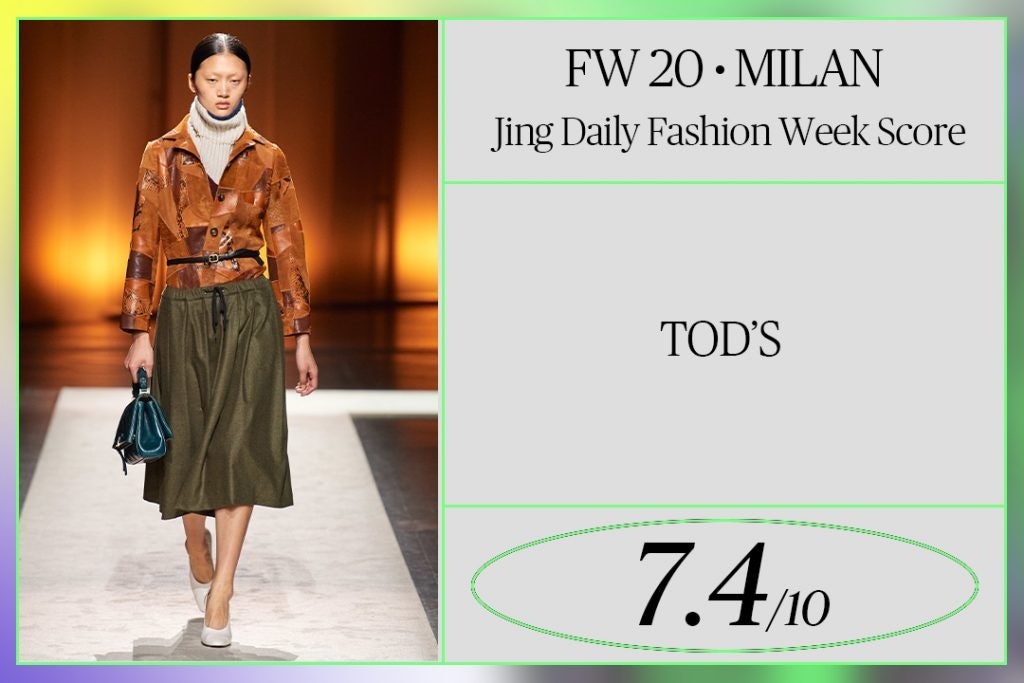
The debut collections of Tod’s new creative director, Walter Chiapponi, was supposed to be a big moment for the brand; however, the excitement for both the menswear and womenswear lines, which Chiapponi designs, did not translate to Chinese media. Tod's did strike gold online dropping its latest campaign with Tod's ambassador Liu Haoran. At the time of publishing, the topic had 15 million reads for two variations of the hashtag #Tod’sambassadarLiuHaoran (#Tod’s品牌大使刘昊然). Ultimately, the new campaign overshadowed Tod's Fall 2020 runway debut. Meanwhile, Tod’s official WeChat post of the collection has garnered a strong click rate, with 25,000 views, but lacked high engagement. The brand’s ambition for the China market is loud and clear, given that it announced two new brand ambassadors, actress Jiang Shuying and actor Tong Dawei, for Greater China last year, and also collaborated with the influential blogger Mr. Bags for more exposure this season. Its organic connection with Chinese netizens still remains untapped but stands to grow.
SALVATORE FERRAGAMO#
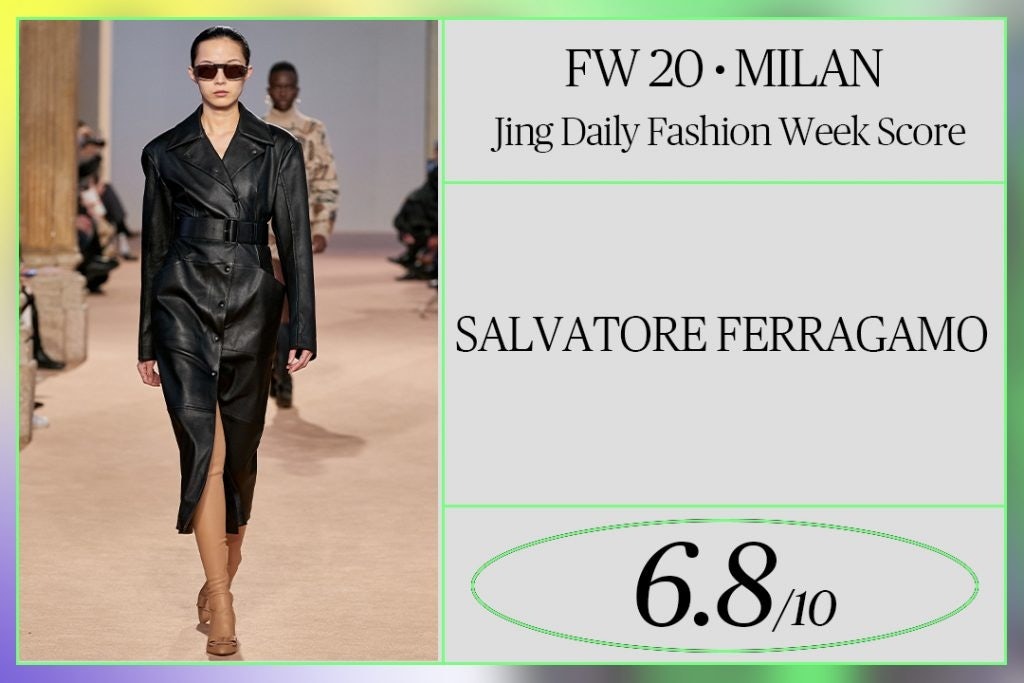
Newly appointed Creative Director Paul Andrew may have only taken the helm for a year, but his understanding of modern women’s multifaceted needs comes through for Fall 2020, thanks to his experience spearheading the brand’s women’s department. The runway looks, from the variations of pantsuits and dresses to the unconventional uses of leather and models’ naked makeup looks, fit right in with the notion of an independent modern Chinese woman. The show also invited iconic models Doutzen Kroes and Irina Shayk to walk the runway, which was a welcomed touch, as they have been long missed by Chinese social media.
MAX MARA#
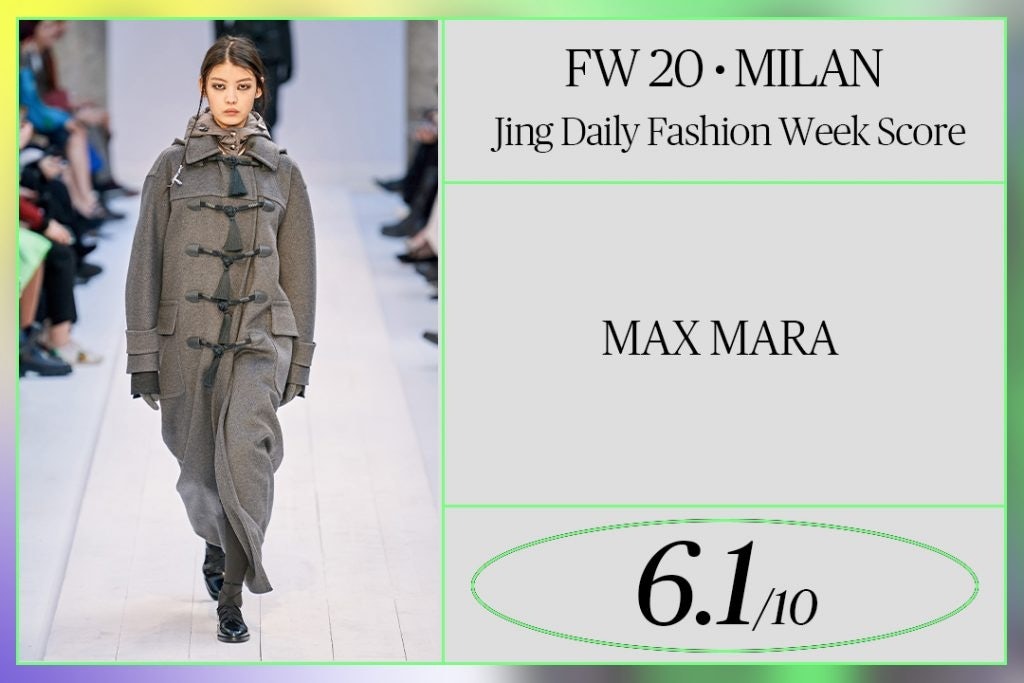
Seen as a synonym for the camel coat by Chinese shoppers, Max Mara’s show this season made an impression on par with its presence in China: quiet but steady. The brand made three official WeChat posts, which garnered 37,000 reads. On Weibo, users praise this season’s earthy colors and hues and linked them to the beauty of nature. Despite only having two Chinese models for 48 looks, its choice of having Kaia Gerber opening and closing the show gave a boost to its social volume in China. However, if one searches for articles about the brand, top posts are still about the camel coat, which may be a blessing and a curse. Can Max Mara be remembered for other things?
DOLCE & GABBANA#
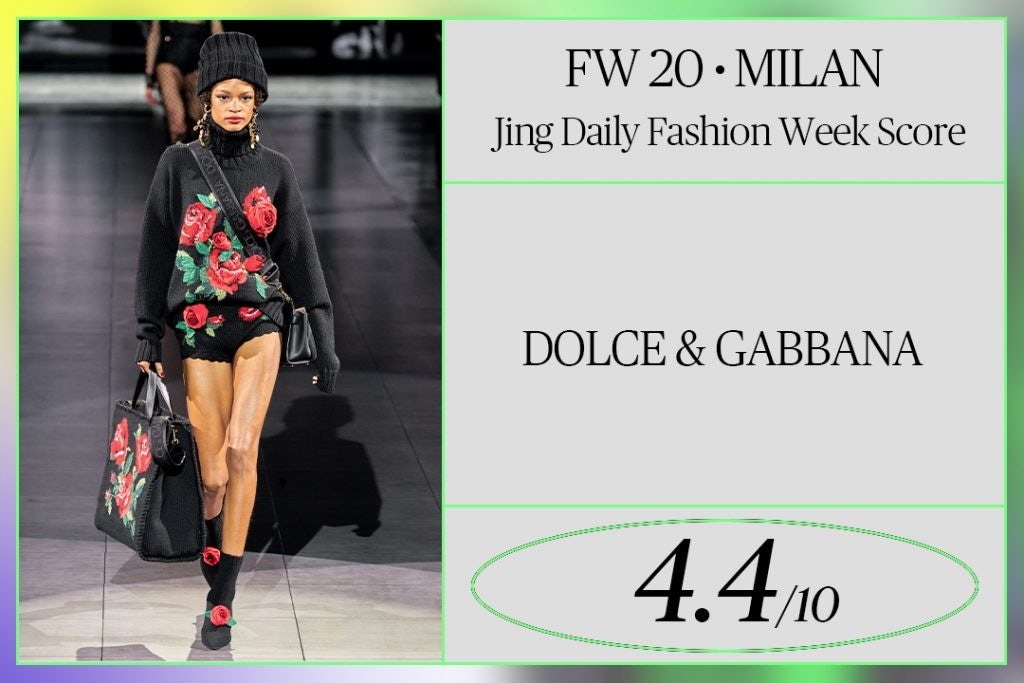
From runway to social media, Dolce & Gabbana's Fall 2020 show missed the mark in China. This season’s show celebrated Italian artisanship, which resonated with its latest Weibo post featuring silk scarves that pay tribute to traditional Chinese culture. However, most of the visible comments on the post are bashing the Italian fashion house, who continues to feel the backlash from its 2018 cultural misstep. The brand has tried to amend their mistakes. After the Covid-19 outbreak, the company donated to Humanitas University, an Italian private university dedicated to the medical sciences, to study the virus, but neither the public nor the Chinese fashion professionals reciprocated. The brand made no effort in reaching the Chinese market digitally, nor had any major KOL or Chinese models in attendance, although it’s likely that the invitations would be turned down. After the brand’s 2018 advertisement scandal and the revealing of co-founder Stefano Gabbana’s alleged Instagram message, its Shanghai show was canceled and 320 models and over 40 celebrities and KOLs either boycotted or were left disheartened by the cancelation. The VIPs might be ubiquitously missing due to the virus, but they may not be back at all.
Reported by Yaling Jiang and Wenzhuo Wu.
